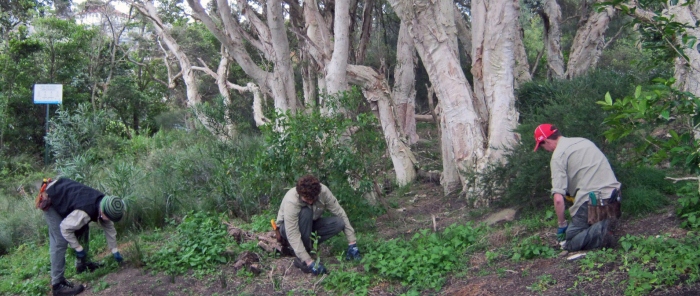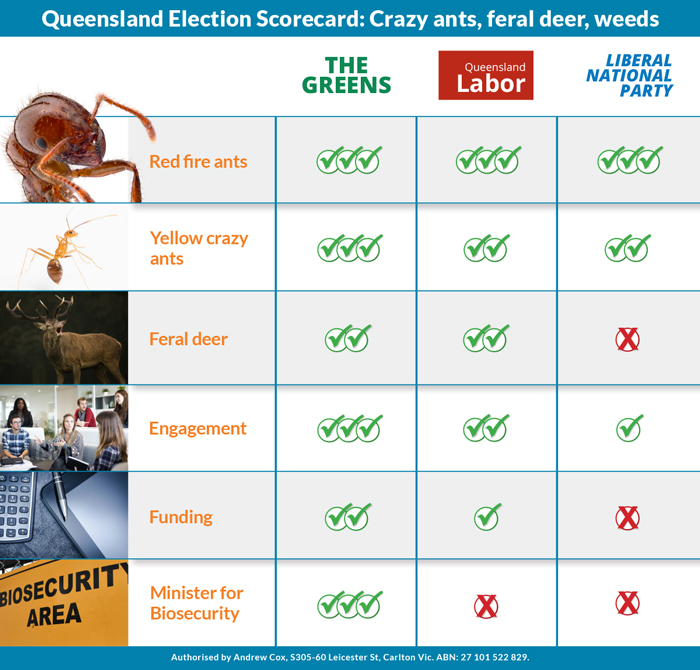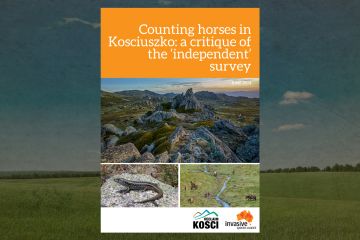
The scientific literature burgeons with papers about escalating weed problems but the public airwaves are largely silent on the creeping peril that is one of Australia’s biggest environmental threats.
There is a noticeable lack of coordinated scientific and expert voices forcefully promoting policies and laws that will address some of the root causes of weed threats.
Are the scientists, the experts and the public land managers who know the problems extremely well too constrained to say publicly what they really think? Are they worried they are breaking the rules of controlling governments that prevent public servants speaking contrary to the ‘whole of government’ position, or do they think that they can achieve more by working from the inside?
I was recently asked to speak at a seminar of the Weed Society in Victoria and I challenged them with this problem.
I worked in government for four years and I understand the arguments and the constraints. The same arguments about advocacy have been had in government and scientific circles over a long time in many other fields.
Advocacy from weed experts, including members of the weed societies, is particularly needed for weed reforms because such a substantial proportion of weed experts are in public institutions and because the issue doesn’t have a high public profile. More than climate change or land clearing, weed policy needs expert advocacy.
It is important to resist the argument that those in government cannot have an independent voice outside their formal roles. When government employees are involved with an organisation like a weed society, that organisation does not need to be silent on issues that may contradict an official government position. The challenge is how you go about it.
There have long been scientists willing to speak out and express alarm about unfolding botanical disasters.
In 1909, the Victorian government botanist, Alfred Ewart, was appalled by the weeds spreading in Victoria and called for controls to prevent any new weed from being introduced. These calls fell on deaf ears, but he was unafraid to state the problem as it was.
There have been some recent outspoken expert advocates. We all rue the loss of the Weeds CRC. Its CEO, Rachel McFadyen, was outspoken in calling for policy reforms including advocating a ‘white list’ approach to weeds. She and ISC and others campaigned to get gamba grass declared as a weed.
Invasive Animals CRC CEO, Tony Peacock, was outspoken against the attempt by the Shooters Party about five years ago to release potentially invasive bird species into game reserves in NSW and critiqued the idea that recreational hunters were effective at pest control.
Individual scientists have often self-organised, such as the highly successful Wentworth Group of Concerned Scientists. They comment on issues such as vegetation clearing, water reform and climate change, strongly challenging government policy and vested interests. This group has had real influence in changing the nature of the public debate and shifting public policy and laws.
Scientists generally recognise the importance of advocacy. In 2012, a study by Pew Foundation of over 2,500 US scientists found that 97% said it was appropriate for scientists to ’become actively involved in political debates’.
Scientists are an essential part of our community and it is important that their voices are heard.
Weed Societies have shown a willingness to be publicly active. At the national level the Council of Australasian Weed Societies has called for mandatory risk assessments for the import of new plants and for more resources to implement an action plan prepared by the CRC for Weed Management. The strategic plan of this representative body seeks to be recognised as the ‘leading, independent body on weed management issues’ and to supports its member’s interests to ‘reduce the impact of weeds’.
The Invasive Species Council is less constrained than the weed societies in its advocacy. While we don’t pretend to have all the answers, we insist on taking an expert, scientific approach to our work and we are willing to state a problem as it really is.
We are able to say that we need more resources to tackle the growing invasive problem. We can see an alarming drop in capacity of biosecurity staff and researchers across Australia. We have been calling for new national and state laws to make our biosecurity system more effective. We are willing to say that environmental weeds have been neglected due to the historical emphasis on agricultural weeds and because weeds are not a sexy issue. We are committing to ensuring that biosecurity decisions are science-based and transparent.
We believe that there is great scope for bringing change in this area, as there has been for other big environmental issues. As is fundamental to almost all ‘public good’ reforms, we need strong public support, attention-grabbing communication through the media, a social media groundswell underpinned by sound arguments and strong well-articulated evidence.
The Invasive Species Council is building up its campaign to reform weed laws and policies across Australia as a central part of its agenda to reduce the impact of environmental from invasive species.
We are working to improve the Biosecurity Bill, currently before the Senate. We are also seeking support for a separate Greens Bill to create an independent authority on biosecurity. Our work in Canberra has been assisted by collaborating with industry groups such as NSW Farmers, Tasmanian Fruit Growers, Nursery and Growers Industry Association, GrowCom and AusVeg.
The Invasive Species Council are promoting a proposal for Environmental Health Australia that would see government, industry and the community working together on strategic issues for environmental invasive species. Earlier in the month we launched a national survey to learn about the extent of organisational efforts in tackling invasive species. Already we have received over 400 responses.
In Victoria we are seeking to influence the proposed Invasive Species Management Bill under development and we are working to break the impasse on feral deer and horse control that is seeing their numbers steadily grow through inaction.
In our work, we are keen to work more closely with botanists, ecologists and weed experts as well as experts in economics, sociology and law.
The Invasive Species Council would like to work more closely with the weed societies from Australia and support them in their advocacy work.
We need substantial changes to weed laws, policies and funding across Australia. This will not come about unless there is concerted and well-organised advocacy.
ISC challenges the view that those in government or academia should remain narrow in their role and refrain from involvement in advocacy. They are part of the community and have in-depth knowledge of the need for reform. The weed societies are in an ideal place to be a representative voice for change.
Our appeal is to all weed practitioners: how best can you support advocacy for weed reform?




